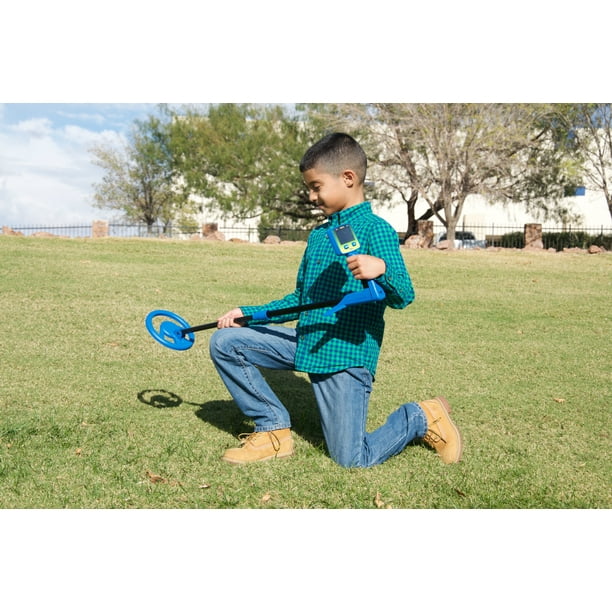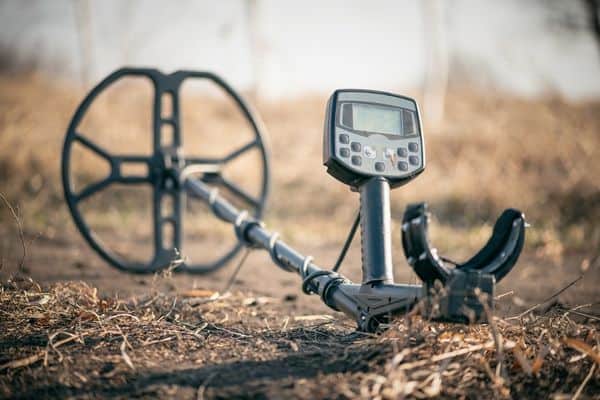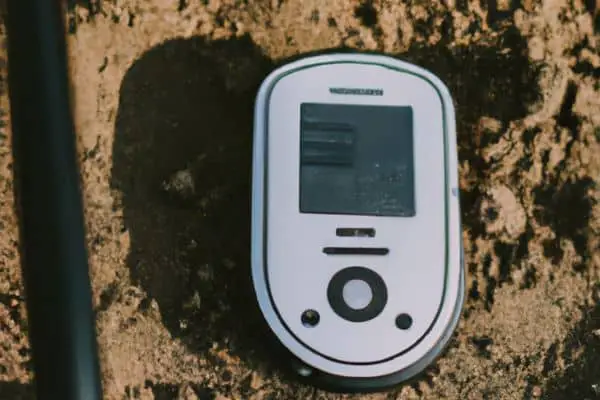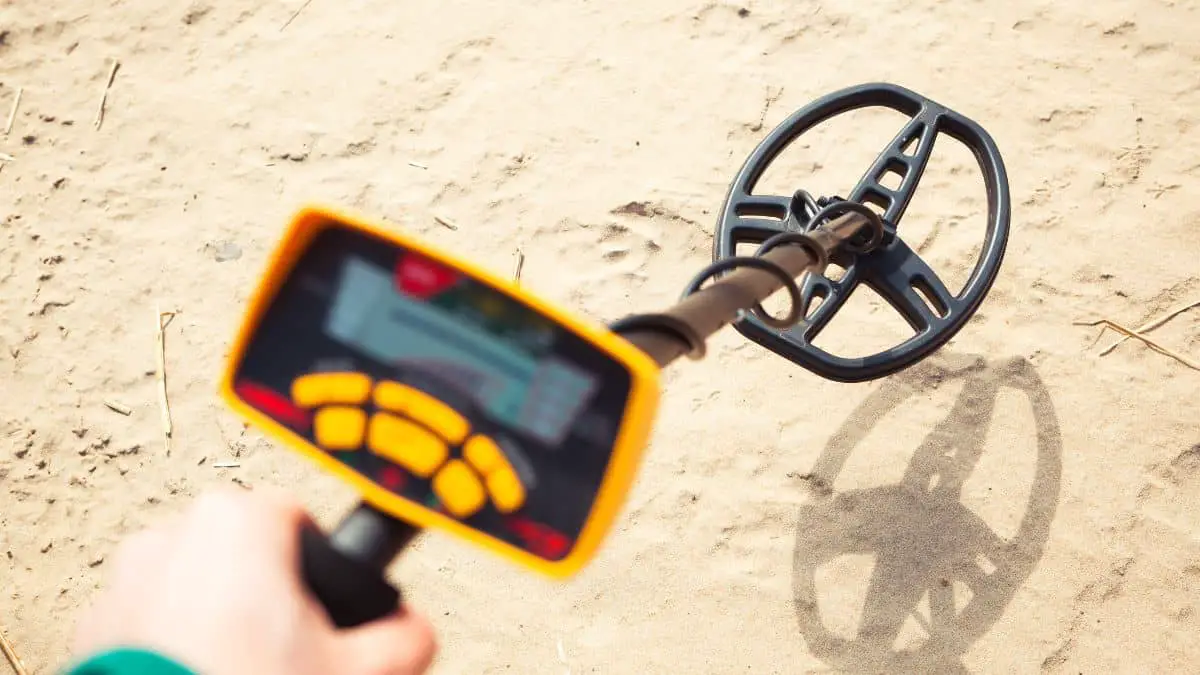Best Metal Detector for Kids: 5 Top Picks (+ Buying Guide)
If you’re looking for new and exciting ways to engage children with the world at large, a metal detector could be the perfect gift.
Metal detecting is an engaging hobby in and of itself. But it also offers wonderful opportunities to teach children about subjects like history, geology, and electromagnetic science.
One thing many parents and adult loved ones are surprised to learn is just how affordable a metal detector can be. In other words, this hobby is far more accessible than you might have previously thought!
Kids of all ages can become DIY treasure hunters with the right tools at their disposal. For young metal-detecting enthusiasts, the Bounty Hunter Junior T.I.D. is our top pick. However, you’ll find recommendations for kids and teens of all ages below.
| IMAGE | PRODUCT | DETAILS |
|---|---|---|

|
Best overall Bounty Hunter Junior T.I.D.
|
|

|
Best Digital Display National Geographic Digital Metal Detector
|
|

|
Budget Option Discovery Metal Detector
|
Best Kids & Youth Metal Detectors: Reviews
Best Overall — Bounty Hunter Junior T.I.D.

Bounty Hunter Junior T.I.D.
A lightweight metal detector with child-friendly features that encourage independent play and exploration.
As far as kid-friendly metal detectors go, the Bounty Hunter Junior T.I.D. is hard to beat. It features a 6-inch water-resistant coil that can detect coin-sized objects up to 6 inches deep.
This youth metal detector is simultaneously built for independent play while still being advanced enough to keep passionate minds engaged. The display screen presents vital data like object depth, material, and battery life in a way children can easily understand.
We recommend this metal detector for younger children such as elementary schoolers in part because of its size. It weighs just 1.5 pounds and has an adjustable (but rather short) stem for comfortable carrying.
Best Digital Display — National Geographic Digital Metal Detector

National Geographic Digital Metal Detector
A high-tech metal detector for older children (and adults!) who have a serious interest in treasure hunting.
The National Geographic Digital Metal Detector is a great gift for older children who have a serious interest in the metal detecting hobby.
It features a high-sensitivity coil that can detect objects up to 8 inches deep. The coil is water-resistant — perfect for taking to the beach — and includes a pinpointing feature to help hone in on potential treasures.
This metal detector is equipped with an easy-to-read LCD screen that displays information about object type and depth. The device emits 7 different tones that distinguish between various types of metal buried beneath the surface. Headphones are included but you can also use your own.
A padded arm cuff and adjustable length make this metal detector comfortable to use for longer periods.
Best Budget Option — Discovery Metal Detector

Discovery Metal Detector
A functioning metal detector that allows even the youngest children to experiment with finding and retrieving hidden objects.
Children are notorious for changing their interests on a daily basis. The Discovery Metal Detector is a simple introduction for young kids who may or may not pursue the hobby further.
This machine’s water-resistant coil detects objects up to 6 inches deep. The stripped-down design is perfect for adventures at the beach or in the backyard.
Unlike most modern metal detectors that utilize visual displays, this one relies solely on audible tones to locate objects. It does, however, have a built-in LED that illuminates where you’re scanning.
This metal detector is definitely more of a toy than a full-fledged tool. But it could be exactly what your family needs to foster a future love of metal detecting.
Best for Teens — Bounty Hunter Tracker IV

Bounty Hunter Tracker IV
A full-size model for kids and teens interested in a classic metal detecting experience.
If you’re looking for a durable, high-tech metal detector for an older kid or teen, the Bounty Hunter Tracker IV should definitely be on your radar.
This metal detector boasts an 8-inch waterproof coil that can locate large objects up to 2 feet below the earth’s surface. Small, coin-sized objects can be detected up to 6 inches deep.
Instead of a digital screen, this detector has a strength meter along with several hands-on controls for things like transmitter sensitivity and object discrimination. The result is a more classic metal detecting experience that many hobbyists find more enjoyable.
Despite its long list of features, this metal detector is quite affordable and easy to use even for beginners. There’s no need for past metal-detecting experience to get the most out of this device.
Best for Accuracy — OMMO Metal Detector

OMMO Metal Detector
A high-powered metal detector for older children and teens that can locate objects buried up to4 feet deep.
The OMMO Metal Detector is nearly unmatched in terms of power. It is an excellent investment for any teen or preteen with a true passion for treasure hunting and exploration.
This metal detector features a 10-inch coil that can locate large objects up to 4 feet deep in the ground. Smaller objects can be detected up to 8 inches deep. The coil is waterproof and can be used to detect objects in shallow water (note that the control box is not waterproof).
In addition to the sheer accuracy, one of the main reasons we recommend this metal detector for experienced adventurers is the inclusion of multiple search modes. You can easily discriminate between different metal types — including setting the machine to completely ignore undesired metals — and pinpoint objects’ exact locations.
Buying Guide: What to Consider When Shopping for a Metal Detector

Overall Size
One of the biggest differences between metal detectors sold for kids versus adults is size and total weight.
A full-size metal detector can be extremely difficult for a young kid to carry and maneuver. For most children, a lightweight model with an adjustable length is the best option.
Detection Accuracy
Accuracy can make or break any metal-detecting experience. An inaccurate metal detector is extremely frustrating to use and could deter beginners from pursuing the hobby further.
While a young child may not need a super-accurate metal detector as their first device, you also don’t want to invest in a tool that will send out false signals or fail to detect objects just below the ground’s surface. Meanwhile, older kids and young adults will be best served by a highly accurate device that can detect large objects several feet deep.
Display
Most modern metal detectors have some form of display that shows things like object depth and material type. Additional information like signal volume and remaining battery life may be displayed as well.
Selecting a metal detector with an age-appropriate display screen will encourage independent play and experimentation. For example, some of the best metal detectors for young children display images instead of raw data to indicate object location.
Power Source
Power source is an extremely important factor when shopping for a metal detector. Nearly all models rely on battery power for maximum portability.
We also recommend researching the average battery life of any given detector. Chances are, a product that loses power relatively quickly won’t get much use.
Waterproofing
Whether searching for objects at the beach or in your backyard, you want a device that can stand up to accidental water exposure.
Most full-size metal detectors feature waterproof coils for this very reason. This isn’t always the case for detectors designed specifically for kids, so be sure to double-check the product specs.
It’s also important that children understand how to use a detector near water. While a detector with a waterproof coil can be safely used around water, the display and power source must still be kept dry.
Frequently Asked Questions

How Do Metal Detectors Work?
Metal detectors work by sending an electromagnetic field into the ground. This field is produced by the metal detector’s coil (the bottom of the device that you sweep over the ground).
Any metal objects within range absorb some of the electromagnetic energy. These objects then send their own electromagnetic field back up to the coil, which doubles as both a transmitter and receiver.
Some metal detectors simply indicate the presence of a metal object by beeping. More advanced models use information like the returned signal’s strength to show how deep the object is and what type of metal it contains.
What Can You Find With a Metal Detector?
You can find most objects made of metal with a traditional metal detector. Both ferrous (containing iron) and non-ferrous metals can be found with a metal detector. However, ferrous metals tend to give off stronger electromagnetic fields and are therefore easier to locate.
Common items found with metal detectors include:
- Coins
- Screws and nails
- Metal jewelry
- Pots and pans
- Silverware
- Bullets and shotgun shells
Can You Find Gold With a Metal Detector?
Yes, you can find gold with a metal detector but it is harder to locate than other metals.
Gold has low conductivity, which means that it sends back a very weak signal when hit by a metal detector’s electromagnetic field. Only the most sensitive metal detectors can accurately locate pure gold.
Gold mixed with other metals — i.e., gold alloy — is much easier to find because the additional metal increases the object’s total conductivity. As a result, finding items like gold jewelry is fairly common when compared to pure gold.
Last update on 2024-04-20 / Affiliate links / Images from Amazon Product Advertising API







